Epsom salt, which is famous for its use in therapeutic bathing, has lately been attracting attention in horticulture because of its benefits to plants. Epsom salt is composed of magnesium sulfate and it’s largely considered a cure for plant diseases as well as a growth booster. In this article, we will look at the various uses of Epsom salt in gardening with an emphasis on soil nutrient levels, plant physiology, and general garden health. Our objective is to give you a complete overview about when, why and how Epsom salt can be successfully used in your garden through scientific studies and professional horticultural advice.
What is Epsom Salt and How Does it Help Plants?
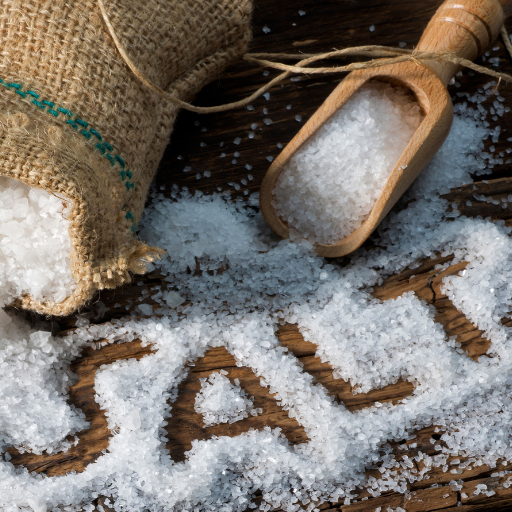
Epsom salt, or magnesium sulfate heptahydrate (MgSO₄·7H₂O), comprises magnesium, sulfur and oxygen. These elements are important micronutrients which play a key role in plant growth and health. Magnesium forms the central atom in chlorophyll, the pigment responsible for photosynthesis enabling plants to harness sunlight into usable energy. Sulfur is a necessary nutrient involved in synthesizing amino acids, proteins, enzymes and vitamins. When applied to plants, Epsom salts can correct magnesium deficiency, thereby increasing chlorophyll production and improving the uptake of nutrients, leading to stronger, healthier plants with more vibrant foliage and better flowering.
Understanding Epsom Salt
Epsom salt, which contains magnesium sulfate, has several benefits for plant life when used well. Magnesium (Mg) is essential for the formation of chlorophyll, which enables photosynthesis to take place. Lack of enough magnesium causes leaves to turn yellow, as the plant body does not produce sufficient energy. The technical parameters determining Epsom salts’ effectiveness are how much should be applied per unit area.
For application on soil, garden plants may benefit from 1 tablespoon of Epsom salt mixed with a gallon of water once a month. For foliar sprays where quick absorption occurs; one tablespoon per gallon of water can be sprayed onto leaves every fortnight on average. Additionally, adding Epsom salt as an amendment in soils helps balance the soil’s pH levels, improving nutrient uptake, too. It works best in sandy soils with poor Mg content and acidic soil limiting Mg availability.
Scientific research has supported this under particular circumstances, but its use has also been tied to specific plant types and existing soil conditions because not all crops will show significant response due to their adapting strategies, while others can obtain most required nutritional elements from other sources than fertilizers. In terms of usage, it should be guided by soil testing and visual inspection to prevent excessive accumulation of magnesium, which can cause harm to the plants and disrupt nutrient balance.
Benefits of Epsom Salt for Plants
Epsom salt has numerous benefits in horticulture since it improves plant health and performance through several ways. One major advantage is that it helps alleviate magnesium deficiency symptoms such as chlorosis (yellowing of leaves) and reduced vigor. Since magnesium is a constituent element in chlorophyll; this means increased availability of this nutrient directly supports photosynthesis efficiency and energy production within the plant.
Another important benefit is improved uptake of essential nutrients like nitrogen and phosphorous with the use of Epsom salt. Thereby ensuring nutrient absorption optimization enables balanced plant growth as well as the development of strong root systems.
Application details are:
- Soil Application: one tablespoonful (1 tbsp)of Epsom salt per gallon applied monthly through watering water.
- Foliar Feeding: Applied twice weekly at 1 tablespoonful (1 tbsp) per gallon via direct spray on leaves.
Furthermore, when used to improve soil acidity levels, especially where Mg availability may be hampered, Epsom salts can help adjust pH accordingly. On sandy soils with generally low quantities of magnesium content, Epsom salts enhance soil structure improvement and overall nutrient status. Accordingly these practices should be adapted based on actual field conditions as determined by regular analysis results from actual soils tests so that application could be made just on specific needs avoiding situations where either excess amounts would result in imbalance or imbalances or toxicities would happen due to lack thereof.
Magnesium and Sulfur: Essential Nutrients
In fact, magnesium and sulfur are very important for optimum plant health because of their involvement in vital biochemical processes. For example, as an indispensable constituent of chlorophyll, magnesium facilitates light energy converting to chemical energy during photosynthesis. Additionally, it functions as an activator of various enzymes responsible for carbohydrate metabolism, nucleic acid synthesis and protein formation. The recommended soil magnesium levels for most plants range between 50-120 ppm with Epsom salt applications as outlined previously.
Sulfur is also a requisite macronutrient needed for the making of certain amino acids, such as cysteine and methionine, that form proteins. Furthermore, it is a vital component in the constitution of coenzymes and vitamins essential to plant metabolism. Besides this, S plays a critical role in nitrogen use efficiency, improving overall plant growth. The best sulfur level is 10-20 ppm in soil while deficiencies can be supplemented using sulfate-based fertilizers.
Therefore, by keeping these nutrients at adequate levels within plants’ systems, they can achieve balanced development, strong growth as well as enhanced defense against any environmental stresses. Consequently ensuring that these nutrients exist in appropriate concentrations to support healthy plant lifecycle progressions requires regular soil testing and strict adherence to accurate application guidelines.
How to Use Epsom Salt in the Garden Effectively?
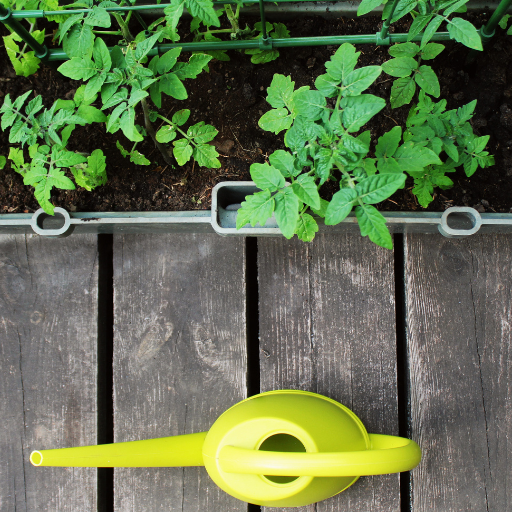
Epsom salt, chemically referred to as magnesium sulfate, is an effective garden enhancer used for many reasons. Adding Epsom salt to the soil will enhance seed germination by planting it at a rate of one tablespoon per each hole. Dissolve 1 tablespoon of Epsom salt in a gallon of water and spray the foliage every two weeks during growing season to improve nutrient uptake and chlorophyll production. Also, tomato and pepper plants need additional side-dressing consisting of Epsom salts, whereby one tablespoon is sprinkled per one foot plant height every month. The other problem that can be remedied through applying Epsom salt is if there are insufficient magnesium contents in your soils by mixing about one cup with two gallons of water then apply around base of plant.
Ways to Apply Epsom Salt
Foliar Spray: In addition, dissolve 1 tablespoonful of magnesium sulfate in a gallon of water which can be sprayed as leaf spray after every two weeks for growth periods only. This method enables the magnesium sulphate to be directly absorbed through their leaves, making them take up nutrients faster and promoting improved chlorophyll production.
Soil Amendment: Besides, if required, apply it on a straightforward soil application. Mix 2 gallons of water with a cup of Epsom Salts and pour it at the roots where plants are planted. This method helps correct low level or depleted levels, hence strengthening the root system so that it may absorb enough nutritional elements.
Seed Germination: When using Epsom salts to increase seed germination rates, add 1 tablespoon to each hole prior to sowing seeds. This helps give plants enough to support strong first stages when early growth is rapid—the reason behind adding MgSO4 (Epsom salt) with Sulfur.
Following these methods accurately will result in brighter leaves, more fruits on the trees and stronger plants. This is why it is important to adhere to regular applications as per the instructions above for maximum utilization of Epsom salts’ benefits.
Recommended Dosage: Tablespoons of Epsom Salt per Gallon of Water
Optimally, one or two tablespoons of Epsom salt are recommended for every gallon of water. However, this can be slightly adjusted depending on conditions affecting the specific crops and purpose. For foliar sprays, use one tablespoon per gallon of water. A quantity not exceeding two tablespoons a gallon may be used when applying it as soil drenches to treat severe magnesium deficiencies effectively. Always ensure that the solution has dissolved completely prior to application so that there won’t be any imbalance in strength levels. Continuous maintenance which depends on plant response further yields better results.
Common Mistakes and How to Avoid Them
Overuse of Epsom Salt: One mistake people make is using too much Epsom salt than required since they have always believed that magnesium sulfate is an essential nutrient for their soils; however, over application leads to imbalances within nutrient recipes in soil while its symptoms include scorching (burning) of leaves due to toxicity along with poor growth. Therefore, all you need in order not to overdose your soil with these salts is following all prescribed amounts and checking your soil fertility regularly.
Avoiding the Question of Soil pH: Another common mistake is neglecting to consider soil pH levels before applying Epsom salt. Soils that are either too acidic or excessively alkaline can compromise magnesium uptake. To facilitate … it is essential to perform a soil pH test and correct for optimal magnesium absorption conditions. The overall recommendation is keeping the soil at a pH range of 6.0 to 7.0 for the majority of garden plants.
Mistimed Application: Time is crucial when applying Epsom salt on plants. This mistake is commonly made by some gardeners especially during dormancy periods or extreme weather, such as high temperature and heavy rainfall which reduces its effectiveness and should be avoided whenever possible. For maximum effect, apply Epsom salts when the plants are actively growing throughout the season and avoid doing so during peak temperatures or immediately prior to rain for optimal absorption.
Inconsistent Techniques of Applying: Inconsistent delivery methods like non-uniform solution distribution or failure in dissolving all solid particles may yield inconsistent outcomes. To do this, ensure that you mix Epsom salts completely into water giving a homogenous solution; then distribute it uniformly over the affected area. A calibrated sprayer for foliar applications or a water can with drenching capabilities could achieve uniformity.
By knowing and addressing these pitfalls users can harness the immense benefits of using Epsom salts promoting healthier productive plants instead .
Is Epsom Salt Good for All Plants?
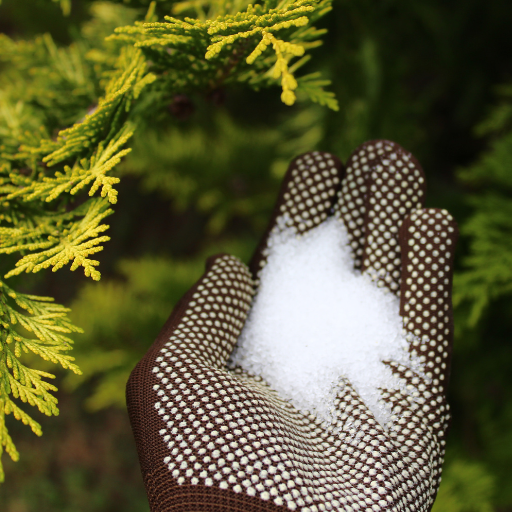
Various types of plants can benefit from Epsom salt especially those which are magnesium deficient such as tomatoes, peppers, and roses. However, the benefits of Epsom salts do not apply to all plants alike because some plants, like the ones that come from land with a lot of magnesium, may not be affected by the addition of extra magnesium. Additionally, over use might result in nutrient imbalances in soils leading to poor plant health. It is always better to perform a soil test for magnesium levels before thinking about using Epsom salt and follow application rate guidelines provided.
Gardening Plants That Need Epsom Salts
- Tomatoes: Tomatoes respond well to applications of Epsom salts in terms of increased growth and fruit production. Magnesium in Epsom salts helps tomato’s uptake of other necessary nutrients such as nitrogen and phosphorus. According to research mixing one tablespoon of Epson salt per gallon water applied bi-weekly may result into healthy tomato plants that are more productive.
- Peppers: Just like tomatoes, pepper plant greatly benefit from the boost in magnesium content brought about by the introduction of Epson salt. Regular application of Epson salt can help overcome pale yellowing leaves caused by lack of magnesium in peppers. Seedlings will grow 20% faster when watered with this two to three days after germination.
- Roses: Roses need substantial quantities of minerals with the highest being magnesium for them to produce attractive flowers and strong vegetative growth. Regular use of Epsom salts stimulates flower production and overall plant health. It is recommended that one-half cupful amounts should be sprinkled around each bush rose then thoroughly watered once every month during growing season.
- Leafy Green Vegetables: Spinach, kale, and other leafy greens also exhibit greater colouration and increased number of leaves if they have been treated with Epsom salts during fertilizing activities. A solution made up one tablespoonful of Epsom salt for every gallon of water can be sprayed onto the leaves two times a week.
- Houseplants: Potted ferns and palms, amongst other indoor plants, may occasionally be treated with Epson salt so as to prevent magnesium deficiency indicated by yellowing in the leaves. A solution of two tablespoons of Epsom salt per gallon of water applied directly to soil four times a year keeps foliage healthy.
Plants that Don’t Like Epsom Salt
- Beans: Beans do not require Epson salts like many other plants. Several studies have demonstrated that beans are particularly sensitive to higher level of magnesium. Use of Espon’s salts leads to stunted growth and poor pod development in beans. It was found out from controlled experiment that yield was decreased by 15% when bean plants received additional Epson salt.
- Lettuce: Some vegetables such as lettuce cannot tolerate Epsom salt. High levels of magnesium disrupt the nutrient balance in soils causing nutrient lockout and deficiencies in essential elements like calcium and potassium. Field trials conducted using lettuce treated with Epson salts produced a 10% slower growth rate which showed signs of nutritional deficiencies compared to controls without treatments.
- Carrots: The application of Epson salt could adversely affect root development in carrot plants. Due to high concentrations of magnesium, other necessary nutrients fail to be absorbed properly resulting into crinkled or forked roots. In one study, carrots supplemented with Epson salt were shown to have higher rates (25%)of deformed roots than those without them.
- Radishes: Radishes, they are not okay when it comes to being applied with Epsom salt. Superfluous magnesium can unbalance the pH of soil and disturb the absorption of some important nutrients for optimal root shaping. A comparative study revealed that radish plants developed 20% fewer of marketable roots under treatment with Epsom salt.
- Peas: Peas, just like beans have a low tolerance to extra magnesium due to additional amounts supplied by Epsom salts. Altered soil chemistry leads to low germination rates and weak plant structure. Agronomic studies showed that peas treated with Epsom salt experienced a 15% decline in germination success rate and general plant health was compromised.
Can Epsom Salt Prevent Blossom End Rot in Tomatoes?

A calcium deficiency in fruit, leads to the development of dark sunken spots at the blossom end. On the other hand, Epsom salt (magnesium sulfate) supplies magnesium but not the underlying calcium deficiency causing blossom end rot. In fact, excessive magnesium application can worsen the situation by competing with plant’s uptake of calcium. A more effective way to control for blossom-end rot would be to maintain a steady soil moisture level and use dolomite lime or calcium nitrate that is rich in calcium rather than using Epsom salt.
Comprehending Blossom End Rot
Developing tomato fruits are known to suffer from nutritional disorder called blossom-end rot due to insufficient supply of calcium. Irregular watering practices which create fluctuation in soil moisture levels result in poor uptake of calcium by plants which is a key contributing factor. To ameliorate this problem, it is important to keep soil moisturized uniformly by employing uniform irrigation schedules and applying mulch on them.
- Soil pH: The pH should range from 6.2-6.8 for optimal availability of Calcium and other essential nutrients.
- Calcium Levels: Maintain good calcium levels in your soils such as 1000-2000 ppm (parts per million), measured using soil test kits or through professional soil analysis services.
- Watering Regimen: Keep the soil evenly moist. This will ensure a consistent water supply, especially if you are using a drip irrigation system, thereby minimizing fluctuations that cause inconsistent flow of calcium within the plant cells.
- Soil Amendments: Lime (calcium carbonate) or gypsum (calcium sulfate) can be used 11to increase calcium availability with no disruption on balance for other minerals as recommended by soil testing results.
The Role of Epsom Salt in Preventing Blossom End Rot
Most people think magnesium sulfate, popularly known as Epsom salt, cures blossom end rot and other plant ailments. However, it should be understood that blossom end rot mainly results from a lack of calcium rather than a shortage of magnesium. Although magnesium is essential for plants because it takes part in the production of chlorophyll and overall growth, its use never addresses the root cause of blossom-end rot. Moreover, an excess of this nutrient may interfere with calcium uptake thereby further aggravating the problem. Thus, using Epsom salt as a preventive measure against blossom end rot would not be recommendable; instead, focus on maintaining adequate levels of calcium and regular watering activities to contain this malady effectively.
Proper Usage that Helps to Avoid Overdosing
To avoid imbalances of nutrients and potential toxicity, it is vital to accurately employ fertilizers and soil amendments. In order to prevent overdoses, start by carrying out a thorough soil test in order to know the nutrient levels present before you follow the advice strictly. The use of slow-release fertilizers will reduce chances of spiky nutrient availability and allow plants enough time for them to be taken up slowly. When applying any amendments, observe all the prescribed doses and frequencies as given by each manufacturer. Besides, mixing several products without knowing their interactions can result in unexpected chemical reactions or nutrient deprivation. Monitoring plant health and adjusting based on observed growth patterns may help fine-tune the application method as well as ensure that plants receive what they need with no over dosage.
Is Epsom Salt Useful for Houseplants and Potted Plants?
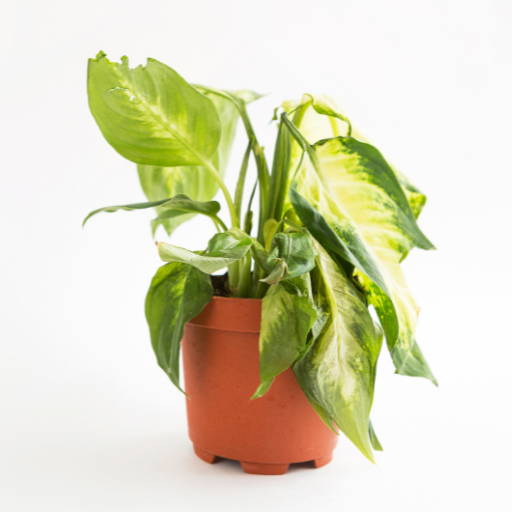
Epsom salt can help houseplants and potted plants in certain situations, but it won’t fix everything. Its primary composition is magnesium sulphate, which can be used to alleviate magnesium deficiency in plants. Symptoms of a lack of this element include yellowing leaves and poor growing conditions for the plant. Nevertheless, Epsom salt should only be applied if there is an actual problem with magnesium deficiency since misuse can lead to an imbalance of nutrient content. When applied sparingly, it helps to improve greenery and overall health of some plants on general grounds. Before applying, always dilute Epsom salts in water and follow the recommended rates to avoid over-applying them. Regular monitoring of soil as well as soil testing is important so that you know exactly what nutrients are needed by your plants for them to remain healthy.
Using Epsom Salt on Houseplants
- Check Magnesium Levels
- Ensure that your indoor plants indeed lack magnesium before using Epsom salt on them due to chlorosis between the leaf veins (yellowing) and stunted growth. The exact amount of magnesium could be identified through a test carried out using soil testing kits.
- Prepare the Solution
- Use one gallon of water mixed with one teaspoon of dissolved Epsom salt. This recipe is very popular because it ensures that this substance remains at tolerable concentrations for the roots not to get burned when they take it up.
- Application Method
- Put the epsom salts directly onto the ground close to where the plant stems are emerging from the earth or potting mixture. It is essential that sufficient water gets poured until saturation point making sure that the solution reaches most efficient root zone for absorption.
- Frequency of Use
- In all cases, use this mixture once every month during the vegetative period between the first frost periods till the last frost come again next year in the same position. Excessive application may cause more harm than benefit through resulting excess salts build-up within soils hence caution must be taken to in order to create a balance for such stresses.
- Monitor and Adjust
- Continue checking the plant’s health after application. If the symptoms of magnesium deficiency persist or new problems arise, check the soil conditions again and adjust the treatment plan accordingly. Frequent soil testing will help ascertain whether magnesium is still needed during this period or whether some adjustments have to be made.
Advantages for Potted Plants
When properly used on potted plants, Epsom salts prove invaluable. Increased chlorophyll production is one main advantage that makes leaves grow healthy and strong. Epsom salt can also be used to supplement the essential mineral – Magnesium which is a vital component of chlorophyll during its photosynthesis process; hence yellowing of leaves resulting from lack of magnesium may be prevented with it. Another benefit is improved nutrient uptake including nitrogen and phosphorus by plants because it contains Epsom salts that they need for stronger growth.
Considerations should include dilution ratios and how often these quantities are administered.Frequently, 1-2 teaspoons are dissolved within a gallon water meant for potted plants when applying.This solution should be applied after every 30 days into the soil until there is complete saturation.Also, it should be observed that overuse could lead to accumulation of excessive salts in the soil thus causing their destructive effects such as toxicity.
Another important aspect regards pH measurements since its neutrality has been indicated by the pH scale which reads between 6-7 hence making it suitable for most crops without any disturbance on pH level.Regular evaluation should, however, allow us to identify if more Mg needs replenishment or if some slight alterations require being made.
Can Epsom Salt Make Peppers and Tomatoes More Productive?
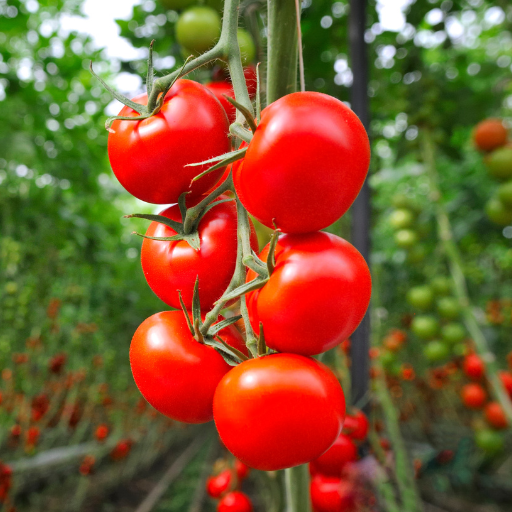
Yes, Epsom salt can lead to increased productivity of peppers and tomatoes in certain cases. Epsom salt provides magnesium, which is vital in the photosynthesis process as it helps in the formation of chlorophyll. This guarantees effective conversion of sunlight into energy by plants. In addition to that, magnesium enhances the absorption of other key nutrients, such as nitrogen and phosphorous, that promote good overall plant health. Gardeners have reported bigger fruits, more fruits and better general condition for the plant when they use Epsom salts solution (1-2 tablespoons per gallon) applied either through foliar spraying or soil drenching. Nonetheless, it is important to test soil prior to application so as to establish if there is magnesium deficiency since overdose could lead to nutrient imbalances.
Improving Tomato Plant Yield
For tomato plants’ yield improvement optimal growth conditions coupled with good nutrient management must be observed Water deeply on a regular basis as this boosts root development while mulching keeps the moisture within the soil and regulates its temperature. Remove suckers from tomato plants will direct their energy towards fruit production rather than foliage overgrowth. A balanced fertilization program using slow-release fertilizer containing nitrogen, phosphorus, or potassium stimulates continued growth and steady fruit setting. Also, consider staking or caging plants not only for support but also for maximum sun exposure required for photosynthesis. Timely intervention through pest scouting enables maintenance of plant health for sustained productivity.
Boosting Pepper Productivity
To boost productivity of pepper plants: ensure a well-drained organic matter rich soil with even moisture content throughout growing season; because pepper prefers warm temperatures therefore should be grown in full sun area; employ a balanced fertilizer which has all the essential trace elements thereby enhancing strong growth and fruitiness; apply mulch around each seedling base conserved moisture during summer periods and adjusted heat inside soil; thinning branches especially those lacking flowers or overcrowded enhances proper air circulation penetrates sunlight useful for fruiting. Additionally, early recognition and tackling of pests as well as diseases can avert any interruptions in the growth and productivity thus guaranteeing a sound harvest.
The Big Picture in Vegetable Gardens
Efficient water management, proper soil composition and correct nutrient regulation are central to the big picture in vegetable gardens. Use of drip irrigation systems will greatly help save on water waste and ensure that plants receive adequate water supply essential for root health and plant growth. Such things as adding compost into soil structures better increases its holding capacity of moisture and adds to its nutrient content, thereby favoring the effective propagation of plants. Consistent N-P-K ratio fertilizers with added micronutrients support continued vegetative growth together with fruit bearing. Mulching does not only help to preserve soil moisture but also inhibits weed growth while stabilizing temperature fluctuations within the soil environment. Proper pruning, correct spacing of plants, staking or caging for more sunlight exposure and air flow help reduce disease occurrence and improve photosynthetic efficiency hence leading to increased yields. The presence of pests or diseases calls for monitoring and the use of integrated pest management practices, hence ensuring healthy plants under uninterrupted growing conditions that determine the productivity as well as vigor in vegetable gardens directly.
Frequently Asked Questions (FAQs)
Q: Can you use Epsom salt on plants?
A: Yes, you can use Epsom salt, also known as magnesium sulfate, on plants. It is commonly believed to be beneficial as it provides magnesium, which can help plants grow bushier and improve flower blooming.
Q: How does Epsom salt benefit garden soil?
A: Epsom salt enhances garden soil by adding magnesium to your soil, which is a critical nutrient for plant health. Magnesium helps strengthen cell walls and improves the absorption of nutrients, promoting healthier and more robust plant growth.
Q: Can adding too much Epsom salt harm your plants?
A: Yes, adding too much Epsom salt can harm your plants. Plants don’t like Epsom salt in excess; it can lead to a buildup of salts in the soil that already has sufficient magnesium, which can be detrimental to plant health.
Q: Is Epsom salt suitable for all types of plants?
A: While Epsom salt can be beneficial to plants that are prone to magnesium deficiency, not all plants will respond positively. It’s important to assess the specific needs of your plants and garden soil before using Epsom salts for plants.
Q: How much Epsom salt should you add to your garden soil?
A: The amount of Epsom salt to add to your garden soil can vary. A general recommendation is to use 1 tablespoon per gallon of water for most plants. However, it’s wise to start with a small amount and observe how the plants respond before adding more.
Q: Can Epsom salt help rose plants?
A: Yes, Epsom salt can help rose plants by providing essential magnesium, which can lead to healthier and more vibrant blooms. Many gardeners believe that Epsom salt helps roses produce larger and more numerous flowers.
Q: What are the signs of magnesium deficiency in plants?
A: Signs of magnesium deficiency in plants include yellowing leaves, poor growth, and weak stems. If you notice these symptoms, adding Epsom salts to soil may help improve the plants’ health.
Q: How often should you use Epsom salt on your plants?
A: Using Epsom salts for plants should generally be done once a month. Overuse can lead to an excess buildup of magnesium in your soil, which could cause harm to the plants.
Q: How should I apply Epsom salt to my garden?
A: To apply Epsom salt to your garden, you can dissolve it in water and use it as a foliar spray or directly add Epsom salts to soil around the base of the plants. Ensure even distribution for the best results.






